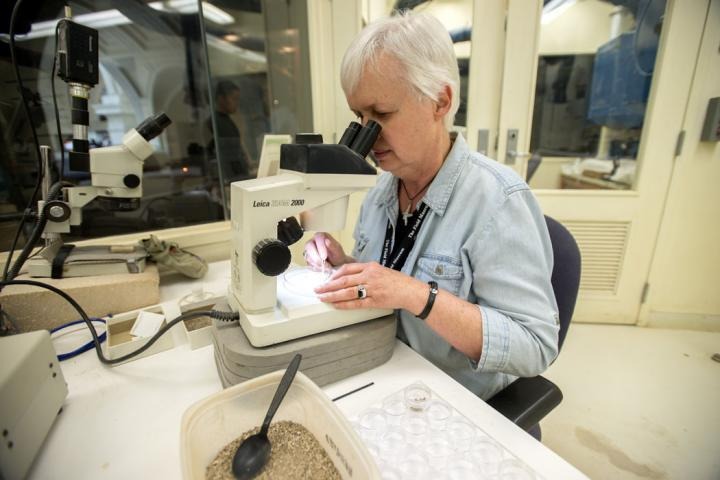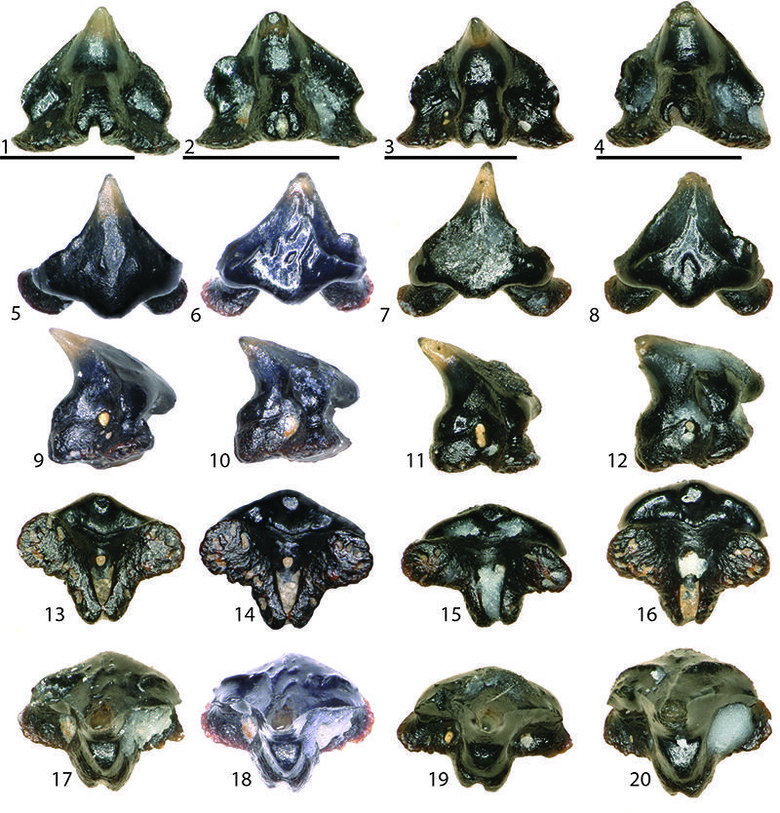Sue T. Rex Leftovers Yield New Galaga Creature
With teeth the shape of the Galaga video game spaceship, a new creature was found and named as such. Found in the dust left over after uncovering the most complete tyrannosaurus rex ever (Sue), this Galagadon was a shark – but a very, very tiny shark indeed. Each one of this shark's teeth (those found here) were only a millimeter wide – super tiny!
The rock left over after sorting out the bones of Sue, the additional sediment, the matrix, sat unsorted in storage for decades. Sue was discovered back in 1990 by fossil collector and explorer Sue Hendrickson, and also goes by the code FMNH PR 2081. The bones of Sue are giant – the final skeleton construct is over 13 feet tall. A millimeter-wide shark tooth was easy to miss.

The find went to retired chemist Karen Nordquist, a Field Museum volunteer who's been sorting through sand, dirt, and bone to find miniature fossils for the past decade and a half.
"It was so tiny, you could miss it if you weren't looking really carefully," said Nordquist. "To the naked eye, it just looks like a little bump, you have to have a microscope to get a good view of it." Below you'll see an image of one Galagadon Tooth – at extreme magnification.

"This shark lived at the same time as SUE the T. rex, it was part of the same world," said Pete Makovicky, the Field Museum's curator of dinosaurs. "Most of its body wasn't preserved, because sharks' skeletons are made of cartilage, but we were able to find its tiny fossilized teeth."
Makovicky is also one of the authors of the Journal of Paleontology study describing the new species. This team was led by North Carolina State University's Terry Gates.
"Galagadon was less than two feet long. It's not exactly Jaws," said Makovicky. "It's comparable to bamboo sharks living today. It probably had a flat face and was very likely camouflage-colored, since its relatives today have a camouflage pattern. It would have eaten small invertebrates and probably spent a fair amount of time lying on the bottom of the riverbed."

Imagine what else they might find, looking at the tiniest magnifications of ancient piles of dirt. Is this something you'd like to do in your spare time? Ask your local museum where to go to try your hand at microsorting!
For more information on the shark, head over to the paper "New sharks and other chondrichthyans from the latest Maastrichtian (Late Cretaceous) of North America." This paper can be found starting this week in the Cambridge Journal of Paleontology. This paper can be found with code DOI:10.1017/jpa.2018.92 starting the week of January 21, 2019.
